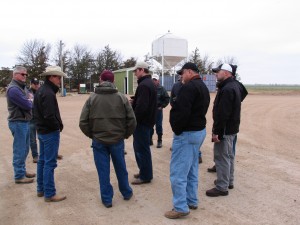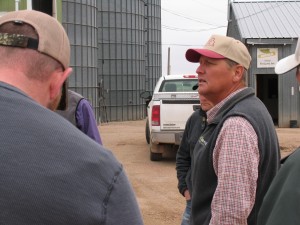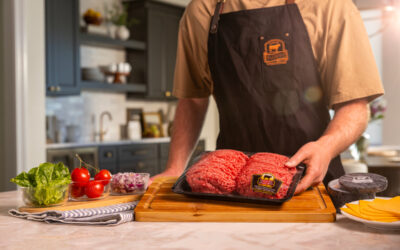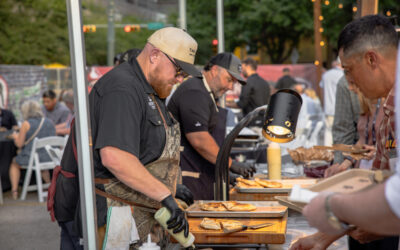
Links in the Chain
Where does that beef on your plate come from? As I like to tell the groups I talk to in public presentations, the engineers of the beef industry are really the seedstock providers. They are developing the genetics that get used by the commercial producer. They are Link #1!
The commercial producer often believes their end of the chain is at the sale barn at weaning time. Not true…not true at all! So, while they are Link #2, the strength of the chain depends on them, too. But, they say, it’s just pounds that we sell, right? We’re just running them across the scale at the local auction, right? Don’t care where they go; don’t care what they do with them afterwards; doesn’t matter how they grade, or how they gain. I only know that I’m done with chores for a while. Hurray! And I’ve got my check!
Wake up folks! You, as a commercial producer, are a HUGE link in the chain of production. Those calves, and how they perform, affect the beef market; affect consumer demand, too. What you feed, when you wean, how you use health protocols, how animals are handled, all affect the final outcome of the product.
I find that there is a tremendous disconnect, still today, in the beef production chain; despite all the press that would lead you to believe otherwise.This is why I welcome the opportunity to bring links together; people who have raised cattle all of their life but have never fed one to harvest and don’t understand how fed cattle are managed and marketed.

Recently, we hosted this group of producers who were interested in learning more about our licensed feedlots in Kansas and Oklahoma; and learned about the production chain all the way through the packing plant. Bully! None of them had fed their cattle in the past. Most were marketed via Tel-O-Auction and identity was lost after that.
Feedlots (Link #4….I skipped through the stocker/backgrounder at Link #3) sometimes purchase cattle on these Tel-O-Auctions, are a gathering place for cattle from all over the U.S…many with unknown genetics, health status, vaccination protocols, and performance outcomes. But in today’s market, which is often a losing proposition (for sure right now) for those taking the risk of buying the cattle, feedlots are looking for more information on the background information on calves. At $850 to $1,000 a pop for feeder cattle, and $375/ton feed (DM basis), it’s a lot to risk for something that you don’t know how will turn out.

Everyone wants more money for the product that they produce; that’s understandable; they’ve spent time and money investing in their enterprise and want more for it. That’s the American, capitalistic system…but everyone needs to make a little money along the way to pay the bills. That “everyone” includes the packers (Link #5), although many folks think they are the profit robbers! Not true…they’ve been taking their share of the hits, too.
It’s important to keep all the links connected and informed. From seedstock producer, to the commercial cow-calf man, to the backgrounder/stocker operator, to the feedlot, to the packer…one weak link can seriously hamper the strength of the chain. And the beef industry NEEDS a strong chain right now. Per capita beef consumption, at least domestically, needs a boost. We can do that if we all work together to form a strong supply chain that is overflowing with information and shared knowledge.
Learning more about the other segments of the industry is PARAMOUNT to understanding your role, no matter how small or insignificant it may seem to you. It affects the overall strength of the industry. Do not underestimate the value of your contribution–and learn more about the other links in the chain.
Next time on the road…takes me to the great Texas Panhandle, one of my favorite places! Till we talk again…..adios!
~Gary
You may also like
Success, Despite Challenges
Today’s market is complex and competitive. The collective effort of stakeholders across the supply chain positions Certified Angus Beef to meet the record demand for premium beef moving forward. Signals across the beef industry are clear and Angus farmers and ranchers seeking high-quality genetics that deliver premium beef are producing a product in high demand.
Keep the Supply Coming
A record-high 800 registrants from 17 countries gathered in Austin, Texas, to learn more about CAB, become inspired by the culinary work of chefs and pitmasters, and celebrate sales and production success. But at the forefront: supply and demand, a reflection of the chaotic past year, and preparing for what’s ahead.
Consumer Demand, Power of Quality
Demand for high-quality beef persists. But with that demand comes challenges. From tight cattle supplies to higher costs and increasing pressure on retailers to deliver a consistent eating experience, the pressure is on. David O’Diam, CAB VP of retail, addressed the current retail beef environment, highlighting both opportunities and challenges in today’s marketplace.



